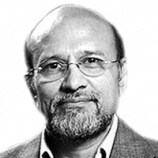The finance minister plans to scrap the supply of subsidised kerosene through the public distribution system (PDS) and high time, too. To begin with, why has the kerosene subsidy needed reform for decades and yet reform never materialised ?
Kerosene obtained through the PDS, being cheaper, is used to adulterate diesel and petrol. Kerosene leakages in the PDS are estimated to be 40 per cent of total allocations. The diversion is lucrative for distributors, who bribe government officials to get licences to distribute the fuel. Kerosene and petrol station dealerships are much in demand as they fetch huge returns through fuel diversion. The government has quotas for awarding such dealerships. In 2004, when corruption was discovered in the awarding of service-station concessions, the Supreme Court cancelled all contracts and ordered the government to distribute them more transparently .
Ending the subsidy would put an end to the adulteration that causes a loss to the government treasury. Second, kerosene blended with petrol and diesel causes engine damage, affecting vehicle life. A third benefit of ending the subsidy would be that air pollution from the inefficient combustion of adulterated fuel would be reduced. Fourth, the substitution of kerosene with solar lamps could help reduce the oil import bill. Fifth, fuel diversion has meant that, sometimes, India’s poor have to go without lights or are unable to cook, because they cannot access their quota of kerosene even though the fuel is abundant at higher prices on the parallel market.
The B.K. Chaturvedi Committee of 2008, using NSS data from 2005, noted that rural households use kerosene primarily for lighting and only 1 per cent use it for cooking, a fact confirmed by Census 2011. With the increase in electrification, the rural use of kerosene for lighting has fallen. The committee recommended that rural households below the poverty line should be given one solar lantern, which would only cost roughly two-thirds of the total annual subsidy on PDS kerosene. This policy was not implemented.
Reform has been tried before. In 2005, global positioning systems were fitted to kerosene distributor trucks, aimed at preventing the diversion of fuel, but the programme was wound up in 2008. In 2006, the government introduced the marking of subsidised kerosene with a dye — once again, the programme closed in 2008. Those who benefit from the corruption proved too powerful to allow reform. In 2007, the petroleum ministry wanted to implement a foolproof smartcard system as an experiment in three states, Bihar, Maharashtra and Uttarakhand. However, all three declined the offer and the plans fell through.
Over the last decade, if PDS kerosene had been distributed in two-litre polypacks , packaged before they reached the refinery gates, the “consumption” of kerosene would have declined sharply. It could not have been diverted as easily as it can be from the current cylinders. Savings from confining the kerosene subsidy to BPL households would release more resources than needed to supply all BPL households with solar lamps (at Rs 1,800 per piece ) . The cost of solar lamps for the entire BPL population would be only Rs 7,350 crore. But solar lamps will only be given out slowly. Until then, access to kerosene would need to continue. We can easily estimate the kerosene needs of the BPL population .
As for LPG, we suggest that only BPL households be eligible for kerosene. We estimate, based on NSS 2011-12, that 94.5 per cent of rural BPL households (or nearly 41 million households) use kerosene mostly for lighting. In urban areas, 77 per cent of BPL households (or nearly 8 million households) use kerosene, presumably mostly for cooking, and for lighting only during power outages. In other words, a total of 49 million BPL households use kerosene in India. Presumably, many households above the poverty line continue to use kerosene too, for back-up lighting and cooking needs, but we are assuming that they would not be eligible for the subsidy in any case.
Assuming 10 litres of kerosene is used by each BPL household monthly, and the PDS retail selling price is Rs 14.96 (as in 2014), the annual out-of-pocket expenditure for all BPL households is Rs 8,817 crore. The subsidy cost to the government was Rs 28,215 crore in 2011-12. By confining the kerosene subsidy to BPL households, Rs 19,397 crore could be saved annually by the government.
Thankfully, in 2015, the Centre plans to ask states to provide subsidised kerosene only to unelectrified households. States with near 100 per cent electrification will be incentivised to become kerosene-free. In the remaining states, unelectrified households can choose between a cash subsidy in lieu of kerosene allocation and an upfront subsidy for greener solar lighting systems. For budget 2015-16, cuts in the Centre’s social sector spending allocation is aimed at aligning plan expenditure with subdued revenue collections. Hopefully, kerosene subsidy reform will not be sabotaged this time around.
source: http://indianexpress.com/article/opinion/columns/a-fuels-errand/99/
The writer is professor of economics, Jawaharlal Nehru University, Delhi, and author of ‘Policies to Achieve Inclusive Growth in India’
